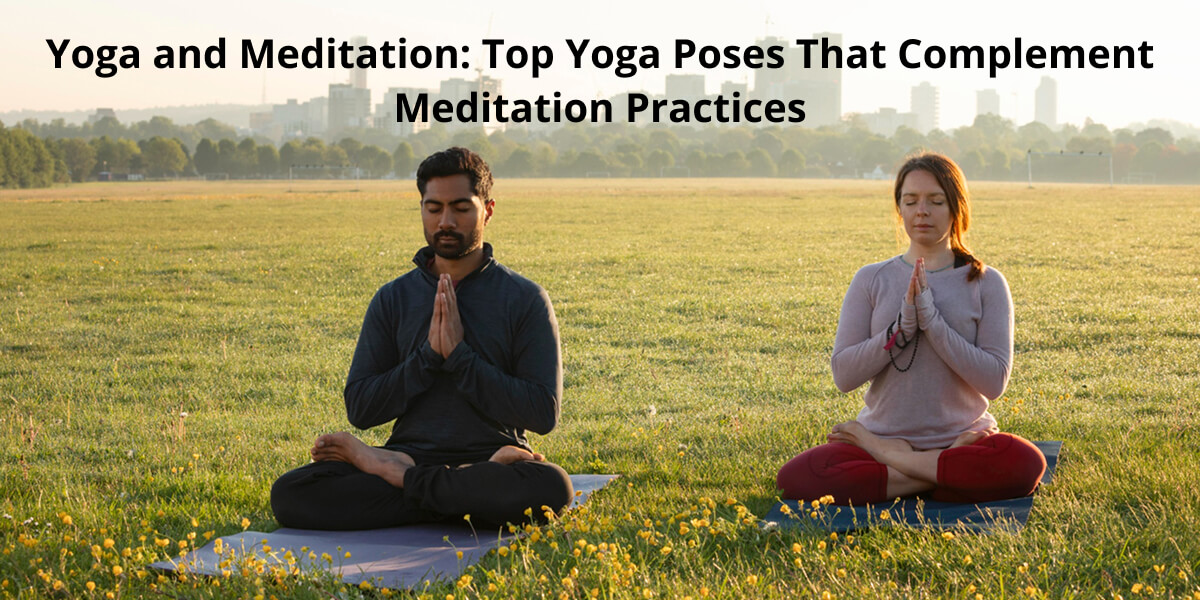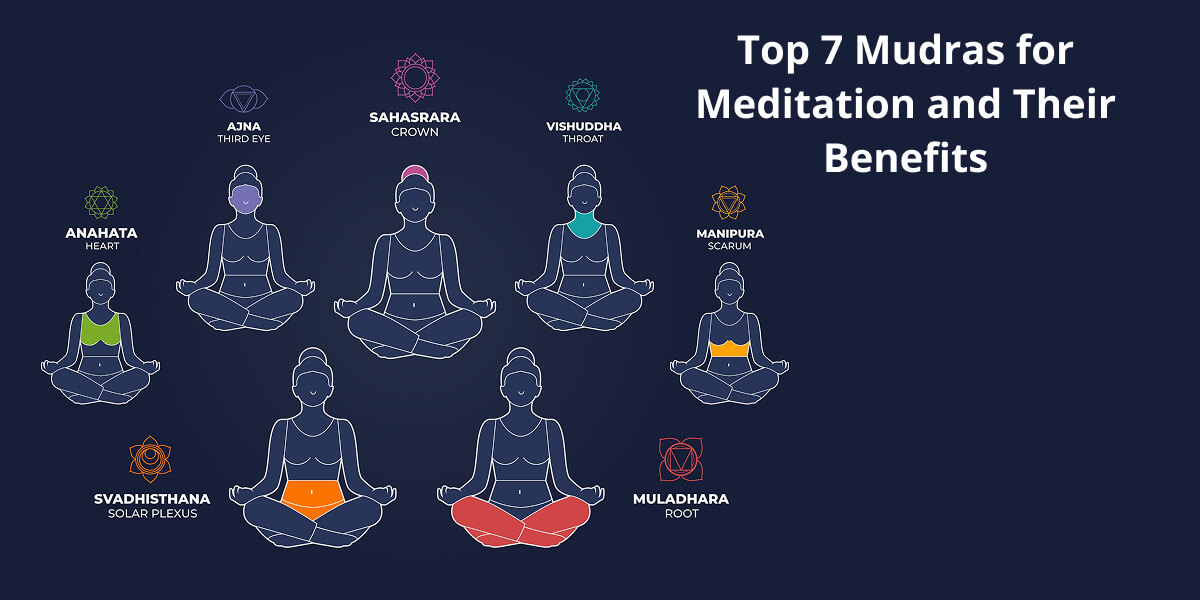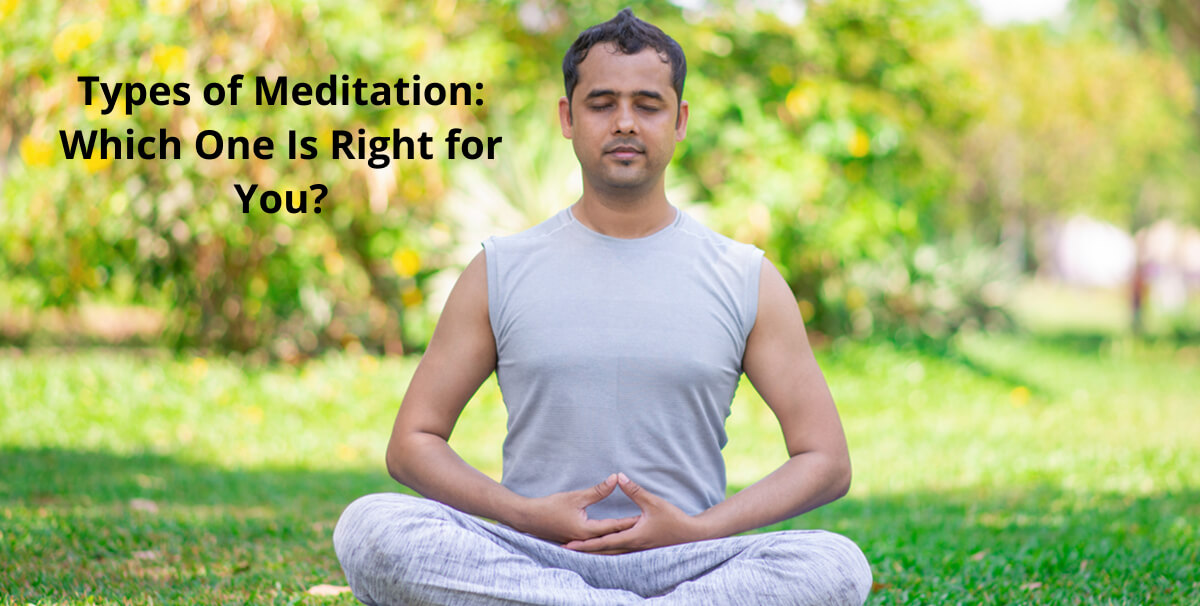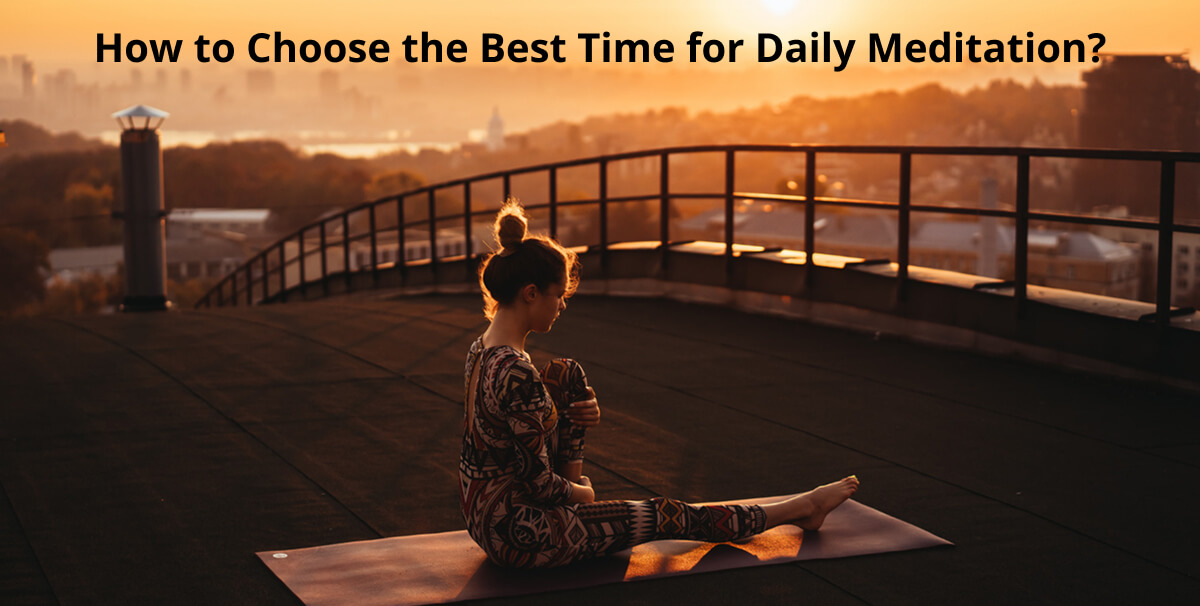
Yoga and Meditation: Top Yoga Poses That Complement Meditation Practices
Table of Contents
Yoga and meditation are deeply interconnected practices, each enhancing the benefits of the other. While meditation cultivates mental clarity and inner calm, yoga prepares the body by improving flexibility, balance, and energy flow, making it easier to sit comfortably for extended periods.
Integrating yoga poses into your routine can help release physical tension, open the chest and hips, and align the spine—all of which support deeper, more focused meditation sessions.
By practicing select yoga poses before or after meditation, you create a holistic approach that nurtures both body and mind, paving the way for a more fulfilling meditation experience.
Why Combine Yoga with Meditation?
Yoga and meditation complement each other in unique ways, creating a powerful synergy for mind and body wellness. While meditation trains the mind to focus and cultivate inner calm, yoga prepares the body by improving flexibility, posture, and circulation, making it easier to sit comfortably for longer periods.
Combining these practices helps release physical tension, balance energy, and enhance mindfulness, allowing the mind to settle more deeply into meditation. This integration supports overall well-being, promoting both mental clarity and physical vitality.
Related Blog: How to Choose the Best Time for Daily Meditation?
Top 10 Yoga Poses That Complement Meditation Practices
Practicing yoga before or after meditation can enhance your focus, release tension, and prepare your body for longer, more comfortable meditation sessions. Certain poses open the hips, stretch the spine, and calm the nervous system, all of which support mental clarity and inner stillness.
Below are the top 10 yoga poses that work hand-in-hand with meditation, along with instructions and benefits for each.
1. Sukhasana (Easy Pose)
A classic meditation posture that encourages a straight spine and grounded presence.
How to do it:
- Sit on the floor with legs crossed comfortably.
- Place your hands on your knees, palms facing upward or downward.
- Keep your spine straight, shoulders relaxed, and chin slightly tucked.
- Close your eyes and breathe deeply for several minutes.
Benefits:
- Promotes mental calmness and focus.
- Open the hips gently.
- Encourages proper posture for meditation.
2. Padmasana (Lotus Pose)
A traditional pose for deep meditation and energy alignment.
How to do it:
- Sit on the floor with legs extended.
- Cross your right foot over your left thigh, then left foot over your right thigh.
- Rest your hands on your knees in Gyan Mudra.
- Maintain an upright spine and relaxed shoulders.
Benefits:
- Stabilizes the body for prolonged meditation.
- Opens hips and stretches knees.
- Improves focus and energy flow.
3. Vajrasana (Thunderbolt Pose)
A kneeling pose that aids digestion and creates a grounded, stable base for meditation.
How to do it:
- Kneel on the floor, keeping knees together.
- Sit back on your heels with toes pointing backward.
- Place hands on thighs, spine straight, and shoulders relaxed.
Benefits:
- Enhances concentration and breath awareness.
- Supports digestive health.
- Promotes inner calm and stability.
4. Balasana (Child’s Pose)
A restorative pose that relieves tension and calms the mind.
How to do it:
- Kneel on the floor, bring your big toes together, and sit on your heels.
- Fold forward, extending your arms in front or alongside your body.
- Rest your forehead on the floor and breathe deeply.
Benefits:
- Reduces stress and anxiety.
- Stretches the back and shoulders.
- Calms the nervous system.
5. Baddha Konasana (Bound Angle Pose)
Opens the hips and encourages relaxation, preparing the body for seated meditation.
How to do it:
- Sit on the floor with your spine straight.
- Bring the soles of your feet together, letting knees drop outward.
- Hold your feet with your hands and gently press knees toward the floor.
Benefits:
- Opens hips and groin.
- Improves circulation in the pelvic region.
- Relieves tension and prepares for meditation.
6. Marjaryasana-Bitilasana (Cat-Cow Pose)
A gentle flow that increases spinal flexibility and energy flow.
How to do it:
- Begin on hands and knees with wrists under shoulders and knees under hips.
- Inhale, arch your back, lifting the chest and tailbone (Cow).
- Exhale, round your spine, tucking chin and tailbone (Cat).
- Repeat several times with steady breathing.
Benefits:
- Warms up the spine.
- Reduces stiffness in back and neck.
- Promotes mindful breathing and focus.
7. Setu Bandhasana (Bridge Pose)
Opens the chest and strengthens the back, aiding better posture for meditation.
How to do it:
- Lie on your back with knees bent and feet hip-width apart.
- Press feet and arms into the floor, lifting hips toward the ceiling.
- Clasp hands underneath your back if comfortable.
Benefits:
- Open chest and shoulders.
- Improves posture and circulation.
- Relieves tension in the spine.
8. Paschimottanasana (Seated Forward Bend)
A calming stretch that soothes the nervous system.
How to do it:
- Sit with legs extended straight in front.
- Inhale and lengthen your spine.
- Exhale, fold forward from the hips, reaching for your feet or shins.
- Keep the spine long and shoulders relaxed.
Benefits:
- Stretches hamstrings and spine.
- Calms the mind and reduces stress.
- Enhances introspection and meditation readiness.
9. Ardha Matsyendrasana (Seated Spinal Twist)
Stimulates digestion and energizes the spine for better posture.
How to do it:
- Sit with legs extended, then bend the right knee and place the foot outside the left thigh.
- Bend the left knee and tuck the left foot near the right hip.
- Inhale, lengthen your spine, and exhale, twist to the right.
- Place the right hand behind you and left elbow outside the right knee.
Benefits:
- Improves spinal flexibility.
- Stimulates internal organs.
- Enhances alertness and focus.
10. Savasana (Corpse Pose)
A final relaxation pose to integrate the benefits of yoga and meditation.
How to do it:
- Lie flat on your back with arms relaxed at your sides, palms facing upward.
- Keep your feet slightly apart and close your eyes.
- Focus on your breath and relax completely.
Benefits:
- Promotes deep relaxation.
- Reduces stress and tension.
- Integrates mind-body awareness for meditation.
Breathing Practices to Combine with Yoga and Meditation
Breathing is the bridge between body and mind, and combining mindful breathwork with yoga and meditation can enhance focus, calm the nervous system, and deepen your practice. Proper breathing techniques prepare the body for meditation and help sustain mental clarity throughout your session.
Incorporating these practices alongside yoga poses supports energy flow, reduces stress, and improves overall well-being.
- Nadi Shodhana (Alternate Nostril Breathing): Balances energy channels, calms the mind, and reduces stress.
- Ujjayi Pranayama (Victorious Breath): Creates heat in the body, enhances focus, and stabilizes the nervous system.
- Kapalabhati (Skull Shining Breath): Energizes the body, clears the respiratory system, and increases alertness.
- Bhramari (Bee Breath): Produces a humming sound that calms the mind, reduces anxiety, and improves concentration.
- Anulom Vilom (Controlled Alternate Breathing): Helps harmonize the left and right hemispheres of the brain, promoting mental clarity.
- Dirga Pranayama (Three-Part Breath): Encourages deep relaxation by fully engaging the abdomen, ribcage, and upper chest.
- Sitali/Sitkari (Cooling Breath): Cools the body and mind, reduces stress, and soothes agitation or irritability.
- Box Breathing (Square Breathing): Involves equal counts for inhale, hold, exhale, and hold; enhances focus and stabilizes emotions.
Common Mistakes to Avoid
While yoga and meditation are accessible to everyone, practicing them incorrectly can reduce their effectiveness or even cause discomfort. Awareness of common mistakes helps ensure you get the full benefits without strain or injury.
Beginners and even experienced practitioners sometimes overlook details such as posture, breath, or consistency, which can hinder progress. By avoiding these pitfalls, you can maintain a safe, effective, and sustainable practice.
- Skipping Warm-Up or Preparation: Jumping straight into poses or meditation can lead to stiffness or injury.
- Poor Posture: Slouching or misaligned spine reduces energy flow and can cause discomfort.
- Shallow or Irregular Breathing: Breath is crucial; neglecting it reduces focus and the calming effects of practice.
- Overstretching or Forcing Poses: Pushing too hard can lead to injuries; respect your body’s limits.
- Practicing on a Full Stomach: Digestion can interfere with flexibility and concentration.
- Inconsistency: Irregular practice slows progress and makes it harder to build a habit.
- Ignoring Mindfulness: Performing yoga mechanically without awareness diminishes mental and emotional benefits.
- Comparing Yourself to Others: Yoga and meditation are personal journeys; focus on your own progress.
FAQs About Yoga and Meditation
Many people wonder how to effectively combine yoga and meditation, especially when starting out. Here are some common questions and answers to guide your practice.
Q1. Which yoga pose is best before meditation?
Poses like Sukhasana (Easy Pose), Vajrasana (Thunderbolt Pose), and Baddha Konasana (Bound Angle Pose) are ideal. They open the hips, lengthen the spine, and create a comfortable, stable base for sitting in meditation.
Q2. Can beginners combine yoga and meditation easily?
Yes. Start with simple yoga poses followed by short meditation sessions. Gradually increase duration and complexity as your body and mind become more accustomed to the practice.
Q3. Is it okay to meditate without yoga?
Absolutely. Meditation can be practiced independently. Yoga enhances flexibility and comfort, but meditation itself is effective on its own for focus, relaxation, and mindfulness.
Q4. How long should I practice yoga before meditating?
A short 5–15 minute yoga session is usually sufficient to release tension and prepare the body. Even a few gentle stretches can make a noticeable difference in your meditation experience.
Q5. What is the best time of day for yoga and meditation?
Early morning is ideal, as the mind is fresh and distractions are minimal. However, afternoons or evenings can also work depending on your schedule. The best time is one you can practice consistently.
Conclusion
Combining yoga and meditation creates a powerful practice that nurtures both body and mind. Yoga prepares the body by improving flexibility, posture, and energy flow, while meditation cultivates focus, calm, and inner awareness. Together, they support overall well-being and a balanced lifestyle.
By practicing mindfully, avoiding common mistakes, and integrating simple breathing techniques, you can make your yoga and meditation routine both effective and sustainable. Consistency and awareness are key to experiencing the full benefits.
Deepen Your Meditation with Guided Yoga Sessions by Mrunal Pawar
For those looking to take their practice to the next level, guided yoga sessions can provide structure, expert insight, and motivation. With step-by-step instructions, personalized guidance, and mindfulness techniques, you can refine both your yoga and meditation practice.Mrunal Pawar offers practical guidance to help you build a consistent routine, improve posture and flexibility, and deepen your meditation experience. Following guided sessions ensures you practice safely and effectively while maximizing the benefits for mind and body.





